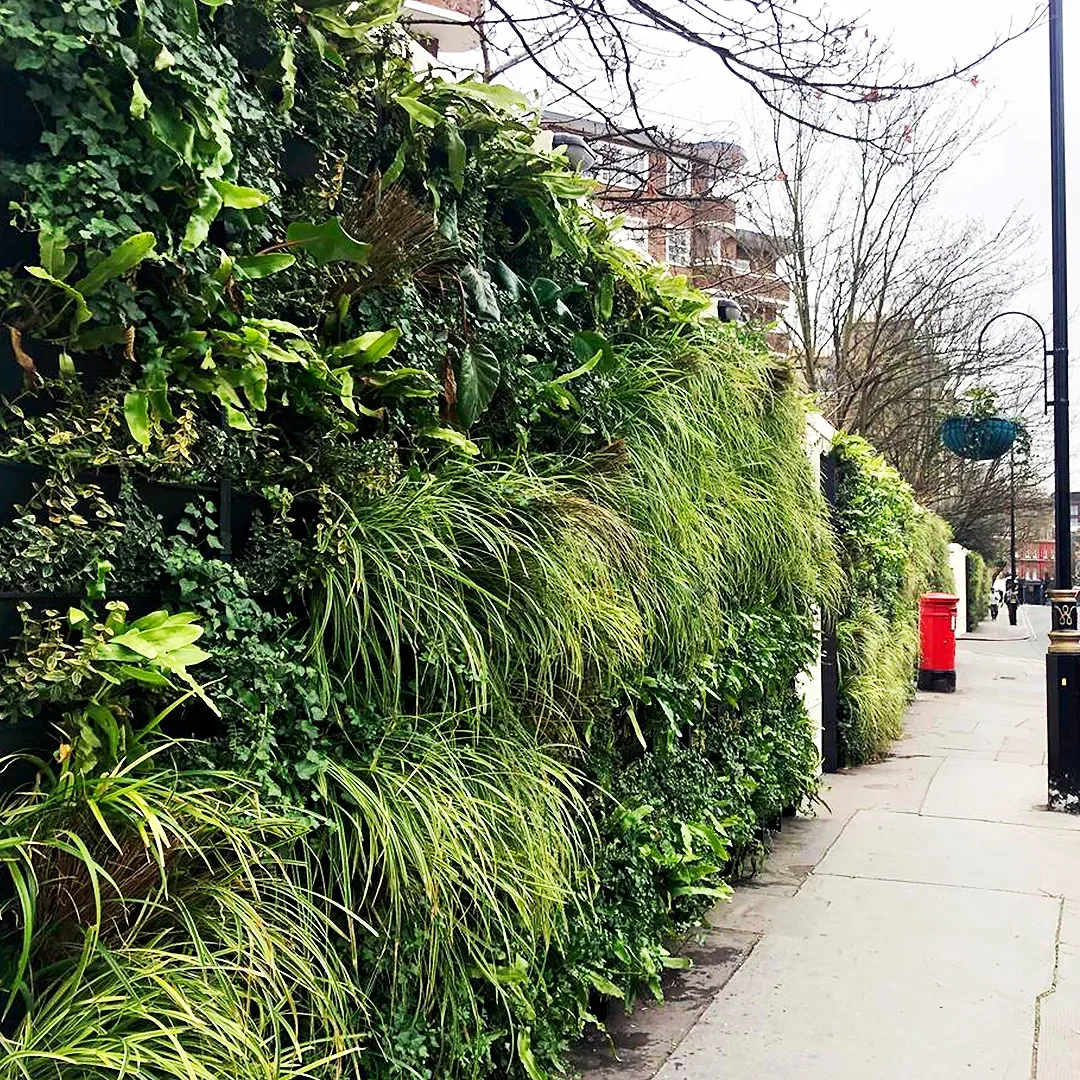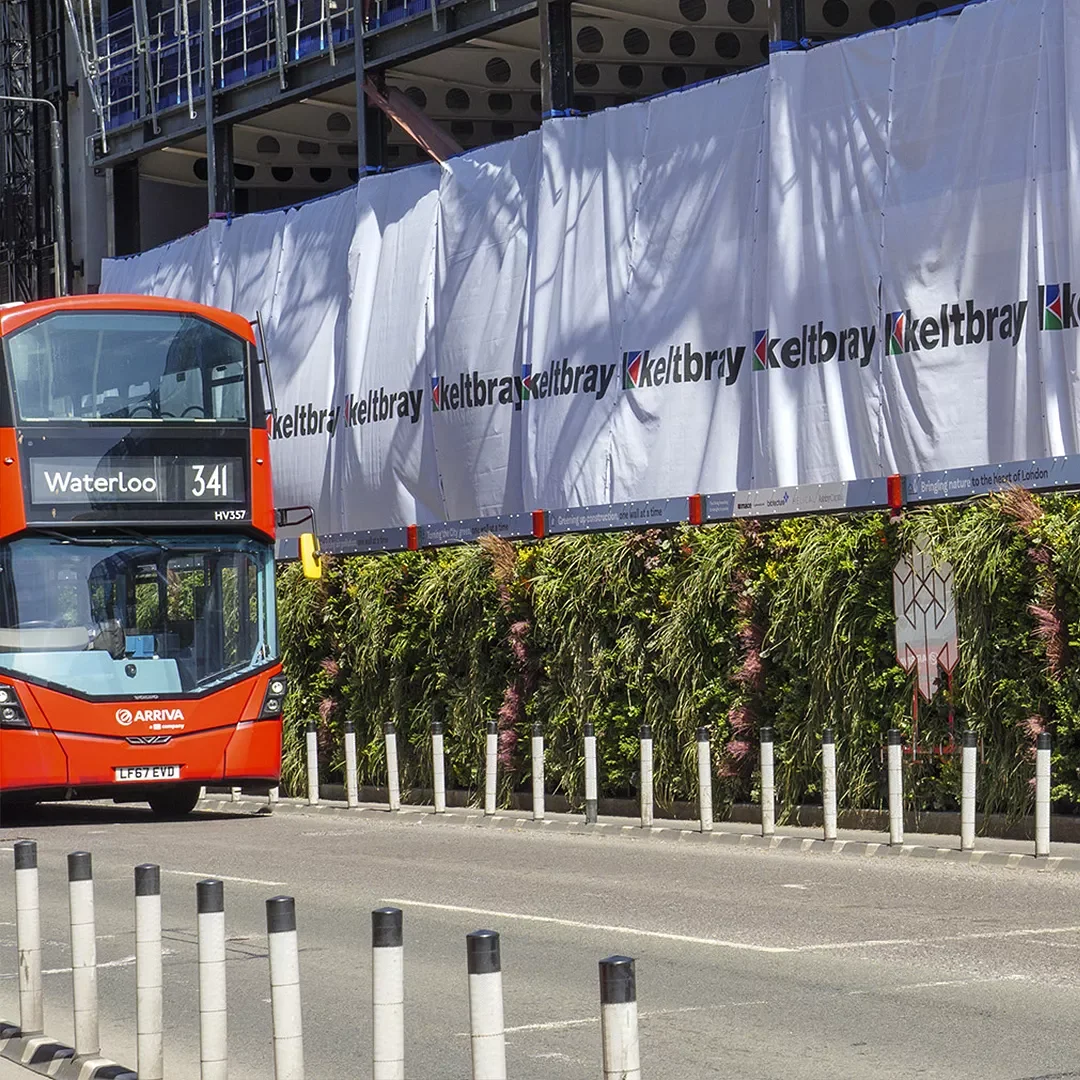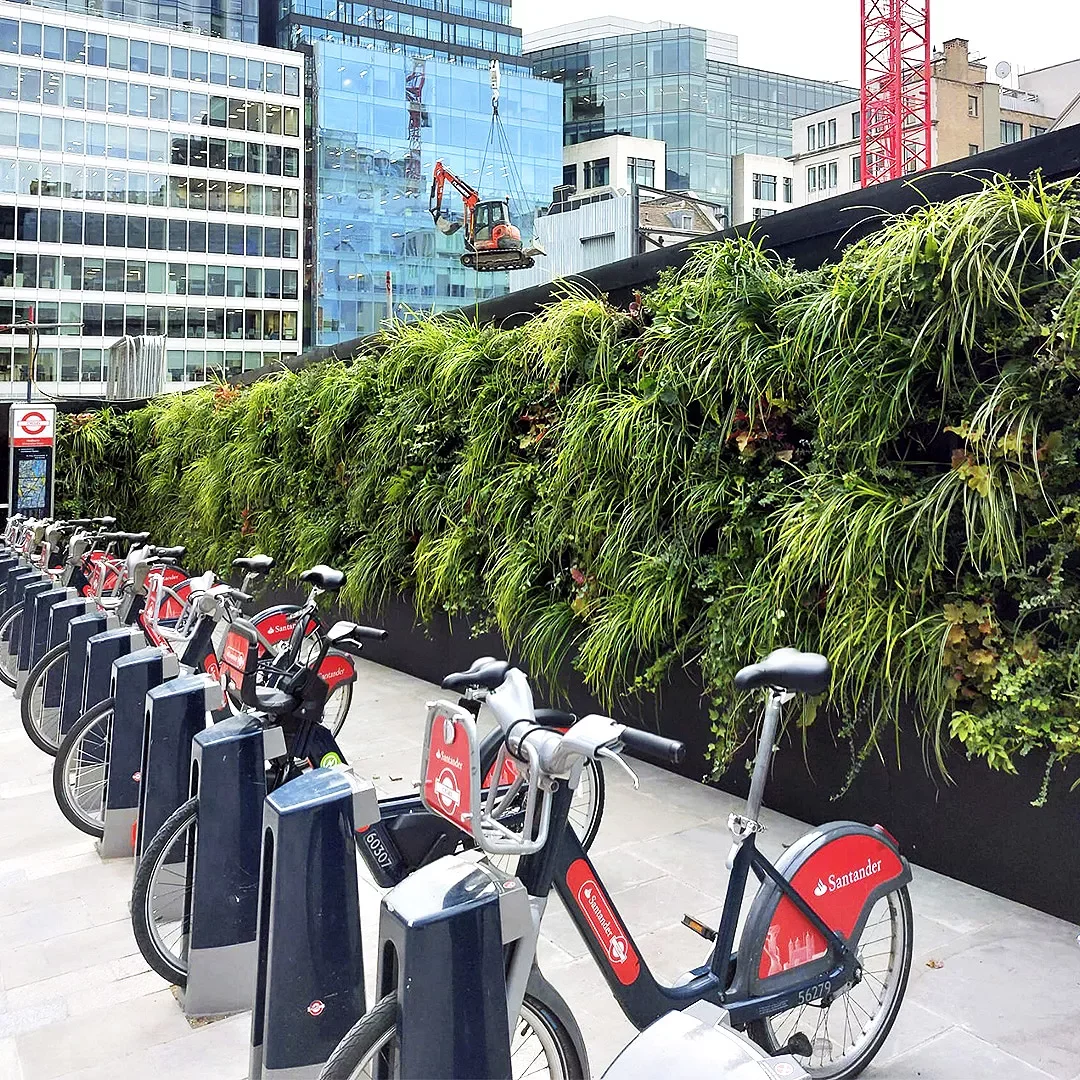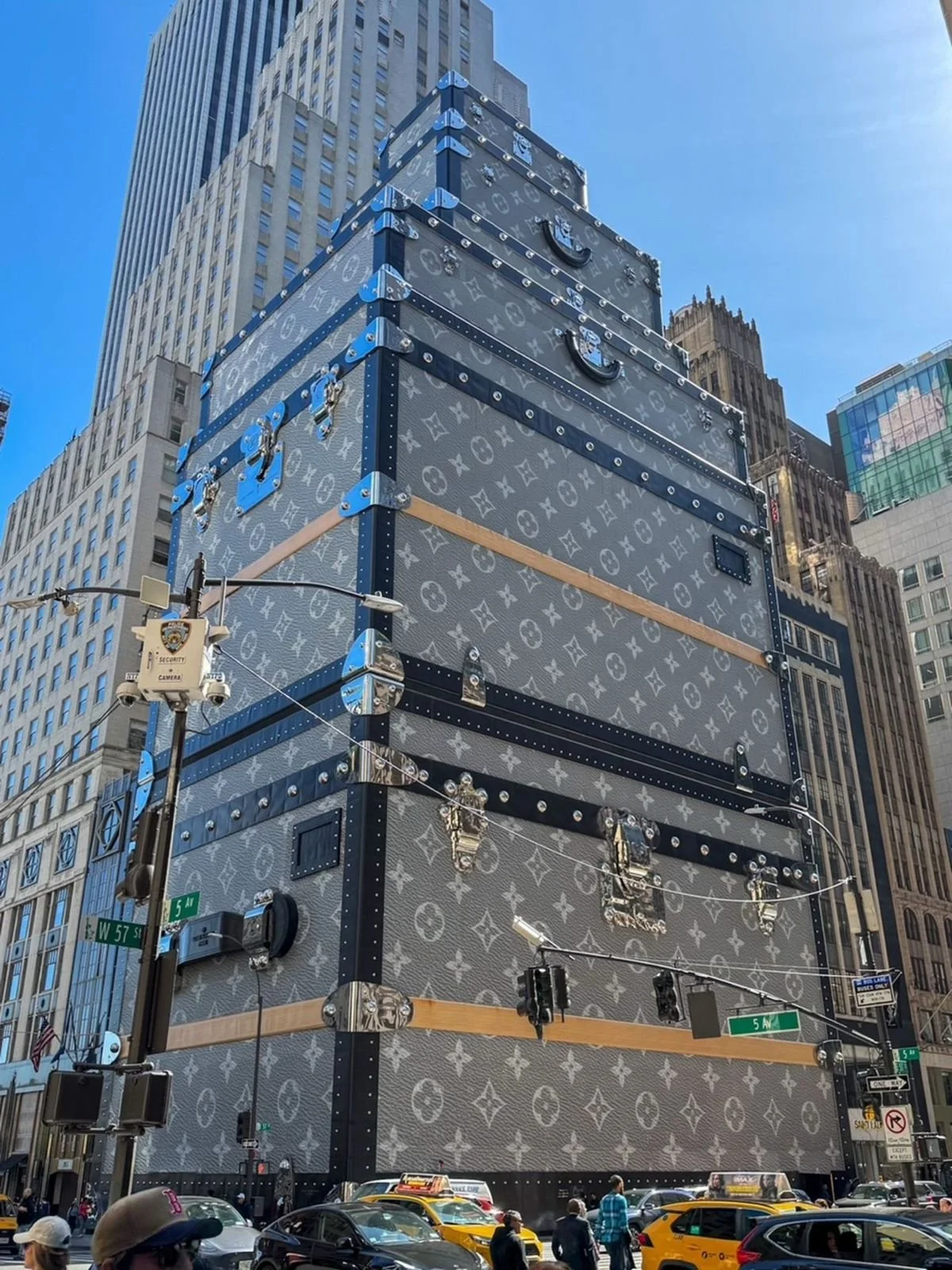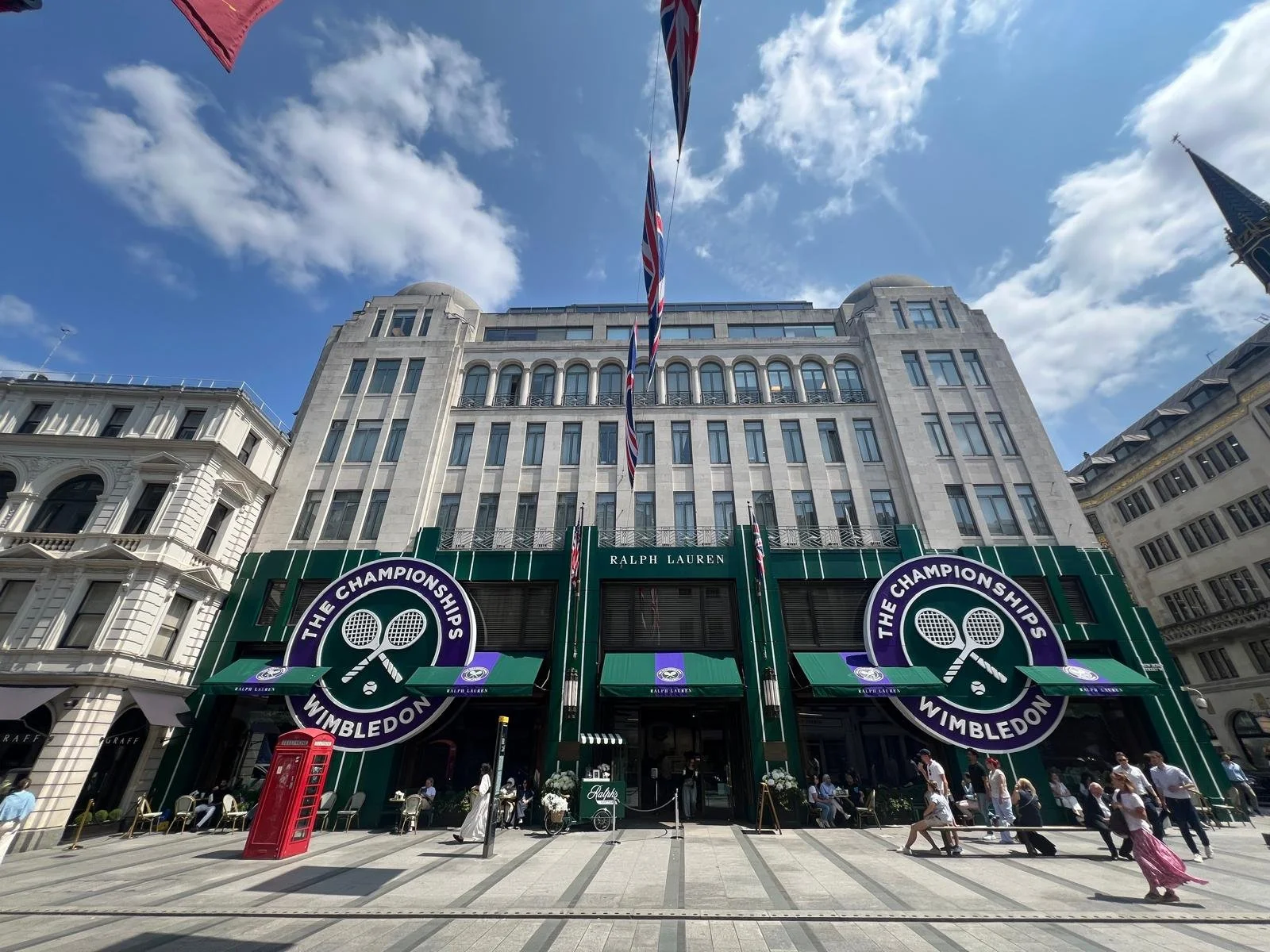SPOTLIGHT ON: Wrapping Buildings, Unwrapping Costs
We’ve all walked past thousands of hoardings, but how often do they make us stop for a second look? Once a humble site fence, hoardings are now asked to do far more: promote brands, host art, soften construction’s impact on communities, and even deliver sustainability benefits.
What was once little more than plywood and paint has become a design feature in its own right. Hoardings today can dictate coordination between teams, slow or speed up programmes, and stretch logistics - with costs that reflect just how bold the concept is.
We’ve pulled together some of the most exciting recent examples, from Sotheby’s dazzling New Bond Street façade to living walls and heritage wraps and full blown branded concepts. Each approach carries its own budget, programme, and procurement implications that clients and consultants can’t afford to overlook.
A new hoading goes up at Sotheby’s on New Bond Street in London, September 2025.
FUNCTIONAL & COMPLIANT
At their simplest, hoardings act as a safe perimeter - a functional shield that protects the public from dust and debris. But these days, developers are being asked to do more. In Sydney and Toronto, for example, plain timber boards aren’t acceptable anymore. Local authorities require developers to dedicate portions of hoardings to community art or historic imagery.
For clients, this means factoring in not just compliance costs but also maintenance, permissions, and end-of-life considerations. Even a “basic” hoarding can carry programme risk if design approvals or plant supply delays come into play.
So what kind of designs are most popular?
COMMUNITY & HERITAGE WRAPS
When working around culturally significant buildings, there’s a strong push to reduce visual impact. The US Supreme Court and Washington Monument both used printed scrims to depict the building beneath, ensuring continuity for tourists. London’s Banqueting House even peeled back its hoarding wrap design to reveal a playful “interior view.”
These heritage wraps often require detailed surveys, large-format printing, and specialist installation. They also need careful cost planning around weathering, durability, and permissions. The effect, though, is striking: they reduce disruption, enhance visitor experience, and show sensitivity to context.
GREEN HOARDINGS
Sustainability is reshaping temporary works, and hoardings are no exception. Vertical gardens and living walls bring nature into dense city centres, reduce noise, and even filter pollution. London councils are also introducing stricter rules. Westminster now requires green walls on hoardings longer than 50m for certain developments.
Alistair Law’s Vertical Meadow system, for example, provides native wildflowers for biodiversity and can be moved from site to site, with irrigation systems reused between projects.
These green solutions carry premium costs for planting, irrigation, and ongoing maintenance, but they can also tick multiple boxes: planning approval, ESG targets, and local goodwill. From a cost consultancy perspective, the challenge is balancing initial spend with long-term reputational and environmental value.
Living Wall Hoardings by Biotecture, photographs by RICS
BRAND STATEMENTS
At the very top end, hoardings become a branded feature in their own right. Take Burberry’s New Bond Street flagship, where a mirror-finish façade was installed by Octink, during major refurbishment works back in 2022. Spanning over 250m² and reaching eight metres in height, it combined over 1,000 vacuum-formed recyclable panels, integrated LED lighting, and illuminated logos.
Delivering hoardings at this scale involves concept design, prototyping, CAD work, electrical integration, and carefully sequenced installation, all while keeping the site safe and accessible. The top end of hoardings may also need to be engineered for wind load, which might require tying back to the building or large hidden concrete weights that sit behind the hoardings.
This kind of scheme sits well beyond what would normally be termed “temporary works” in a cost plan. It’s a statement piece with its own design and procurement pathway, carrying major implications for programme, logistics, and cost.
We recently spotted the epic Louis Vuitton in New York and the Ralph Lauren - Wimbledon hoardings in London, as pictured below.
UNWRAPPING THE COSTS
Whether for compliance, sustainability, heritage, or brand presence, hoardings are becoming part of the public realm. For cost consultants, that means early engagement is key: factoring in design ambition, maintenance, approvals, and programme risk from the outset.
We’re providing a top line estimate of costs that any project could expect to encounter based on the 3 styles above:
Printed Community & Heritage Wraps:
A durable weather resistant PVC mesh or vinyl that allows wind permeability, provides UV protection and is flame retardant typically costs above £30/m2 for larger scale scaffolds.
Green Hoardings:
Green wall hoardings are highly subjective owing to what type of plants are utilised, their density, irrigation needs and required life-span. They are often interspered with printed and branded hoardings, and the green walls require ongoing maintenance. Nonetheless, prices would usually start at £75-£100/m2 for a simple ivy green wall on a painted hoarding with irrigation included - ideal for the UK climate. For diverse green walls with considerable density of planting, this price could be multiplied by 5. Thankfully, there are leasing options with an initial fee and monthly rate.
Branded / Thematic Concepts:
The sky’s the limit here. As an example, the bespoke 3D details like the 840 etched rivets on the Louis Vuitton wrap pictured above could cost £250+ each, after design. The chromed ‘suitcase hardware’ including latches could be up to £5,000+ each.
Factors that Influence Final Price:
Surveys: For both wraps and hoardings, professional installation is a major cost factor which will likely require site surveys.
Design & Planning Permission: Some hoardings of a certain scale, especially in conservation areas, may require planning permission which has further design and fees costs.
Material: Higher-quality materials like durable aluminium composite (Dibond) cost more than lightweight options like mesh banners or Correx.
Size and volume: Larger projects often benefit from economies of scale, leading to a lower price per square metre.
Design and artwork: Simple designs are typically included in the price, but complex creative work will add significant design fees, which are often charged hourly and may require prototyping and forming moulds.
Installation: Depending on the project, it may require potentially hiring specialist equipment and/or installers, such as abseiling specialists.
Project duration: For longer-term projects, more durable materials are required to withstand weather and wear, which increases the initial cost, but can lower long-term maintenance needs.
Scaffolding or substructure: The price does not include the cost of the scaffolding or subframe that the wrap or hoarding is attached to. This is a significant additional expense and needs to be highly coordinated so that any future scaffold alterations, do not affect the hoarding.




